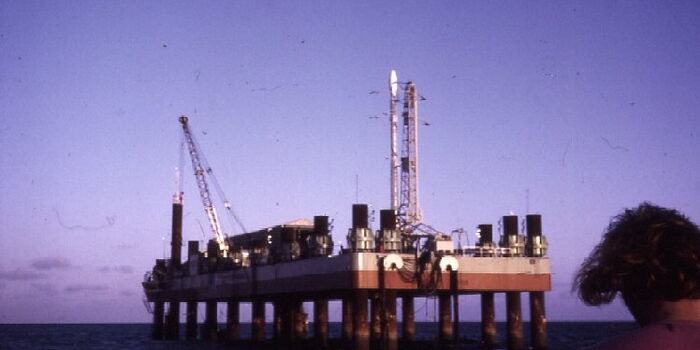It is a boost for Kenya as an Italian-run space centre domiciled in the country revived plans to host rocket launches from an offshore launch platform in Malindi.
The Luigi Broglio Space Station situated 30 kilometers(19 miles) North of Malindi was built in the 1960s to host rocket launches. It was developed to support various aerospace operations, including satellite launches and research. However, the facility has been unused for over three centuries.
The reopening of the facility marks the return of Italy’s space exploration efforts after 36 years of ceasing operations in 1988.
The first major launch of a rocket on the facility was on April 26, 1967, with a Scout B rocket delivering the San Marco-2 satellite into low Earth orbit. Other launches soon followed until the final flight was launched from the facility in 1988. In total, 17 launches were made from the station.
Italian Minister Adolfo Urso and CS for Defence Soipan Tuya at the launch of the Luigi Broglio Museum on October 1, 2024.
Soipan Tuiya
The reopening of the facility is expected to spur businesses such as hotels, restaurants, transportation services as well as retail shops as an influx of visitors will flock the town during launch events. Similarly, the facility is set to employ hundreds of employees among them scientists, engineers and helpers who will need houses to reside thus boosting real estate in the area.
Since the facility has been lying idle for over 36 years, it will require upgrades. These infrastructural improvements will create jobs to the local residents thereby boosting business in Malindi. Additionally, the facility will boost tourism in the area.
The renewal of rocket launches is a significant step for both Italy and Kenya in the realm of space exploration that is set to boost regional aerospace capabilities and international collaboration in space exploration. Kenya is set to benefit from the possibility of launching rockets locally. So far, Kenya has launched three satellites, all launched abroad. However, only Taifa-1 Sat launched in 2023 remains operational.
In 2023, Italy made plans to reopen the facility for rocket launches to further advance their space explorations. Kenyan local media reported that the re-opening of the facility would be of help to Italy owing to the facility’s strategic location.
Italian Minister of Enterprise and Made in Italy, Adolfo Urso, made announcements just before the 75th International Astronautical Congress to revive the space center underscoring Italy’s desire to cement itself as a significant player in the satellite launch market.
“The idea is to give a new, more ambitious mission to this base and use it for the launch of low-orbit microsatellites,” Italy’s minister announced.
Speaking when he toured Kenya in October 2024, Adolfo said the space centre will be resourceful in training Kenyan astronauts. “The Luigi Broglio space agency could train the first Kenyan and therefore first African astronaut in history, in the same way Italian astronauts are trained today,” he shared.
The location was chosen due to its proximity to the equator, which provides a strategic advantage for launching satellites into orbit. Launching from near the equator allows rockets to take advantage of the Earth’s rotational speed, thereby requiring less fuel and increasing payload capacity.
This offshore launch capability is particularly innovative as it minimizes risks associated with ground-based launches, such as potential accidents or debris falling into populated areas.
Kenya established a national space agency in 2017 to promote and regulate space-related activities. Soon after in November 2021, the Kenya Space Bill 2024 seeks to task the Kenya Space Agency (KSA) with the roles of managing approving, or leasing launch sites within the country.
The final draft of the bill is yet to be submitted to the country’s Attorney General for review before being vetted by the National Assembly for approval.
A nano-satellite launched in the Space.
File


